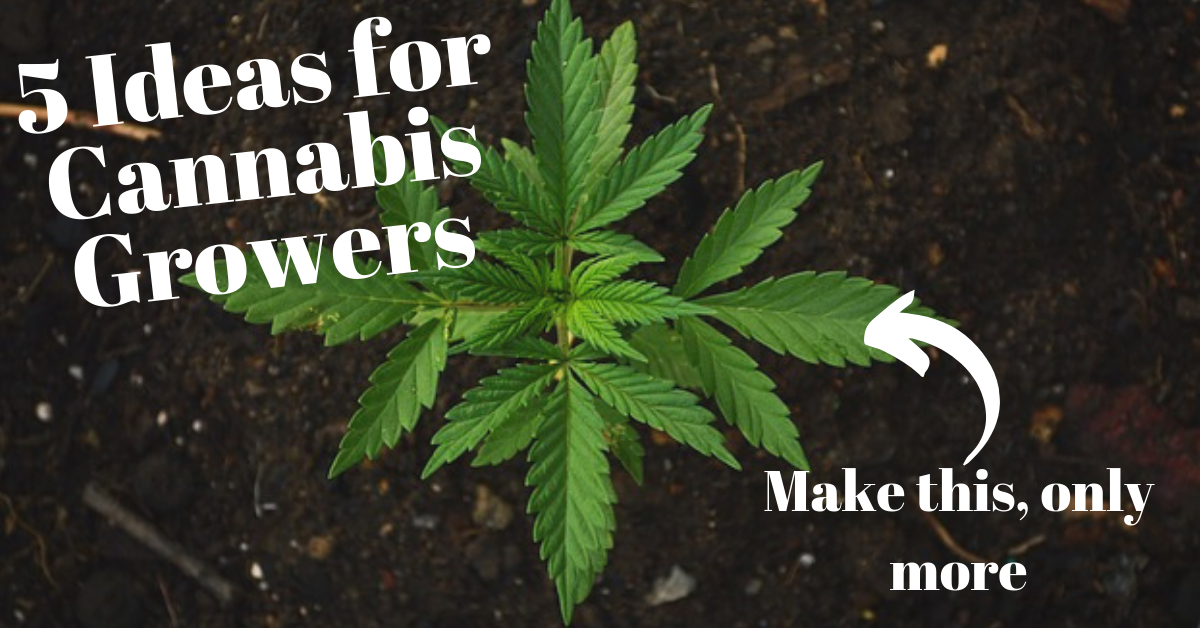
Cannabis is an increasingly competitive market, especially in legal states where the government has seen fit to issue a limited number of licenses.
When your license only covers a limited number of square feet, it’s important to squeeze every last dollar out of your crop.
Read on to learn about five of 2019’s cannabis cultivation trends for large scale growers to help you boost yields as well as bottom lines.
1. Energy Storage and Renewables
One of the biggest costs for cannabis growers—at least indoors—is energy.
It’s estimated that electricity consumption can account for 20% of a grow’s operating costs.
One study suggested that indoor cannabis grows might account for 1% of the United States’ total power consumption.
This consumption comes with an eye-watering price tag of $6 billion per year.
Average cost of commercial energy in the US is 10.5 cents/kWh.
In outlying states like Alaska and Hawaii, it can cost as much as 25.6 cents/kWh.
One 5000 sq. ft grow facility in Boulder County, Colorado, was chewing through 29,000 kWh each month.
Colorado’s average commercial energy cost is $0.12 per kWh, that amounts to a little under $3,497 monthly.

In many states, growers could be looking at twice that.
Cannabis’ growers are famously cautious about adopting new technologies.
However, if you’re looking to get an advantage in the crowded marketplaces of certain states, it might be worth looking for savings on energy through new tech.
Energy storage solutions allow producers to draw power from the grid at off-peak times, as well as from renewable sources.
Electricity can be stored in batteries and used to supplement or replace consumption at peak times.
As battery costs continue to fall, energy storage is becoming an increasingly viable technology for indoor cannabis agriculture.
It’s near-impossible to estimate potential savings without knowing your situation.
However, the greater your operation’s energy needs, the more you may save.
One energy consumption expert ran the figures for a 50-light commercial operation and found expected savings of $13,500/year.
This might not be enough to motivate multi-million dollar operations to take the plunge.
However, as lighting technology improves and prices continue to fall, savings will only grow.
2. Advanced Greenhouses
One of the reasons commercial growers opt for indoor cultivation is the ability to control the environment.
Solaris Farms is a Nevada cannabis producer with a sideline in high-tech greenhouses.
Their Las Vegas desert features greenhouses with anti-microbial floors, advanced ventilation, and state of the art water cooling and control systems.
Solaris has begun to work with other producers to share their expertise in outdoor growing.
The company claims reduced build costs at $100/sq. ft.
The greenhouses aren’t only suitable for the desert; the company is also designing cold-weather greenhouses for Canadian operations.
There are also great companies like Grower’s House that make it easy to source all your growing equipment.
3. Quantum Dots
For readers with a skeptical mind, any product with a name including “quantum” is likely to raise an eyebrow.
However, this one could be worth a closer look.
In large-scale commercial greenhouse operations, technology allows growers to control nearly every variable.
One thing we can’t control? The sun.
Cannabis did perfectly well growing outdoors before people started to grow it.

However, sunlight typically doesn’t provide the optimum light spectrum for flowering.
One quantum dot product, UbiGro, produced by UbiQD, comes in a film which growers can hang above crops in their greenhouses.
The company claims that their product can increase yields of some crops by over 10%.
UbiGro uses tiny, copper-based quantum dot nanoparticles to shift incoming sunlight toward the red spectrum to provide a more optimum wavelength for flowering.
4. Product Verification
Outside of legal states, there’s a big appetite for premium cannabis products.
One local paper in the UK reported that connoisseur quality strains imported from California fetch £700, or nearly $900.
The financial incentive has led some unscrupulous dealers—and dispensaries—to sell their garden-variety products in counterfeit packaging using premium producers’ trademarks.
This isn’t only taking place in the UK or prohibition states, it’s happening in the US’ most established cannabis market, California.
The issue led NBC4 to conduct an investigation where they purchased products from some of LA’s 500 illegal cannabis stores.
They discovered a number of counterfeits, mimicking established brands such as cannabis vape maker Heavy Hitters.
A spokesperson from the brand was at first unable to see the difference.
However, she was able to tell which was which by checking underneath the packaging for a holographic seal.
Heavy Hitters is one of many cannabis brands now using technology to authenticate their products.
One company, CannVerify, offers a solution which relies on a holographic sticker.
The sticker has a unique serial number.
Blockchain technology is used to verify the serial number, allowing consumers to ensure they’ve bought a genuine product.
The financial benefits of this kind of technology are difficult to quantify.
However, in a competitive marketplace where brand identity is everything for some producers, counterfeit and brand protection technology could prove to be a worthwhile investment.
5. Big Data and Artificial Intelligence
Environmental control systems have been part of the cannabis scene for decades.
However, the combination of big data and AI will prove to be a killer technology in the industry, according to Larry Dodson, CTO of urban-gro.
Growers have to keep track of numerous variables such as humidity, temperature, and CO2.
Decreases in the cost of technology now allow growers to monitor every variable constantly, both in the canopy and the substrate.
This might not sound too revolutionary, but that’s where AI comes in.
The data from countless grows will allow tech companies to use AI to calculate optimum growing conditions based on strain and product characteristics.
This means that growers will be able to instantly dial in to achieve, for example, maximum yield, potency, or CBD content.
The power to control environment variables to an extremely precise degree will prove crucial.

Once the technology matures, AI-driven cultivation is certain to lead the way.
The Evolving State of Cannabis Cultivation
We hope you learned something about the latest technology trends in cannabis.
While every grow operation is different, it’s sure that the adoption of new technology will expand alongside the industry.
Leave us a comment below and tell us about your favorite new cannabis technology!